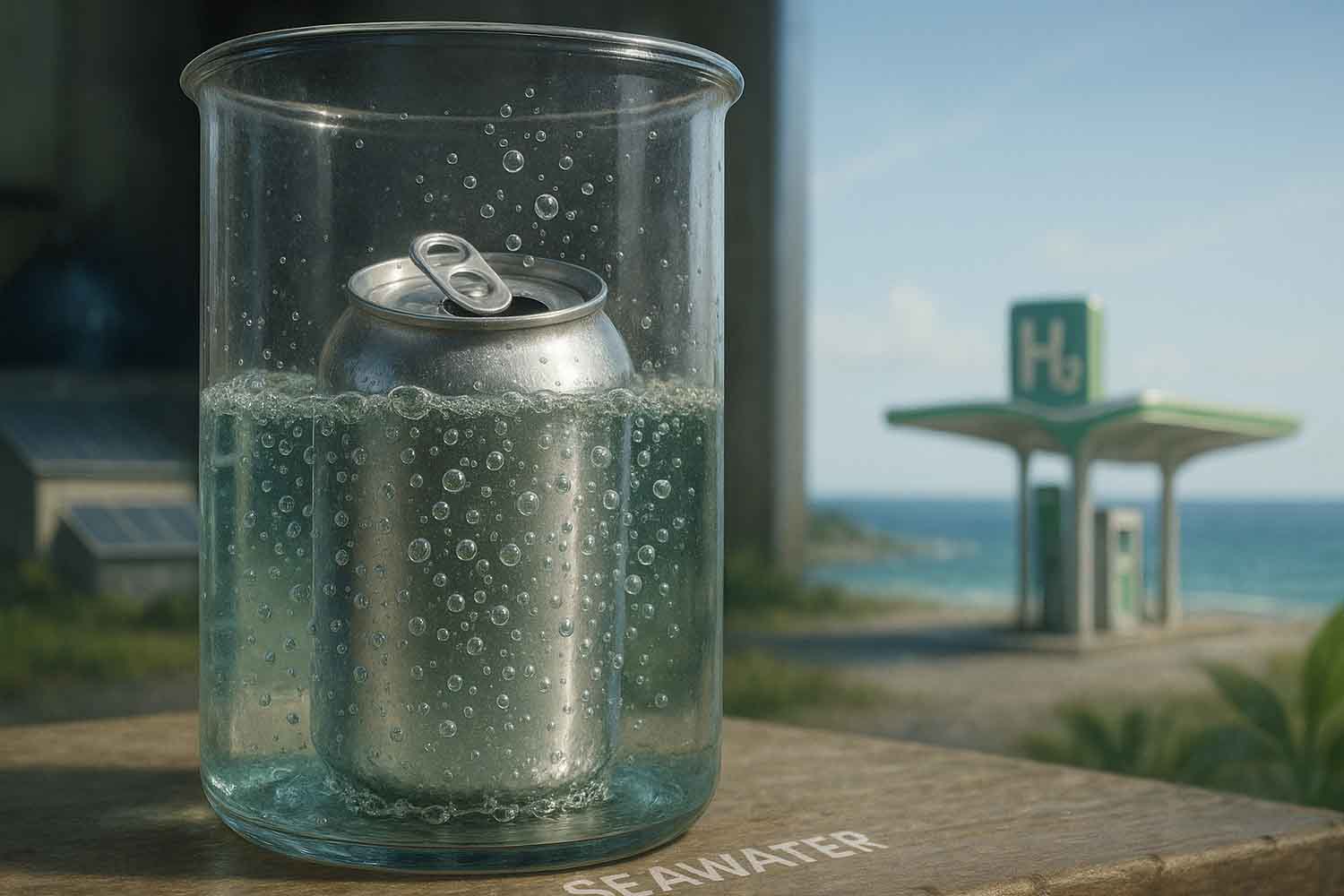MIT's new hydrogen production process using recycled aluminum and seawater reduces CO2 emissions and costs, offering a cleaner, simpler alternative for future energy solutions.

Producing clean hydrogen without relying on fossil fuels remains one of the most significant challenges in the green energy transition. But now, thanks to an innovative process developed by a team at the Massachusetts Institute of Technology (MIT), this challenge seems increasingly within reach. By combining recycled aluminum cans, seawater, and a small amount of caffeine, scientists have successfully generated hydrogen, dramatically reducing carbon dioxide emissions in the process.
While the method had been tested in laboratory settings before, a comprehensive life cycle assessment now shows that this approach can be scaled industrially with minimal environmental impact. This breakthrough could radically change how we produce and use hydrogen as a clean energy source.
How the MIT team’s process works
At the heart of this new process lies the chemistry of aluminum. Typically, aluminum does not react with water, as it quickly forms a protective oxide layer upon contact with oxygen. However, when treated with a gallium and indium alloy, this protective layer disappears, allowing the metal to return to its pure form. In this state, aluminum can react with water, splitting hydrogen from oxygen and producing hydrogen gas along with aluminum oxide.
The researchers discovered that seawater’s salt helps recover the activating alloy, which can be reused multiple times, reducing both costs and environmental impact. According to Aly Kombargi, the lead author of the study recently published in Cell Reports Sustainability:
“With just a tiny amount of aluminum, it’s possible to generate enough hydrogen to power a car or an electric vehicle.”
This process is not only efficient but surprisingly simple: all it takes are treated aluminum pellets and some seawater. No need for high temperatures or complex facilities, and the materials used are inexpensive and readily available.
Reduced emissions, low costs, and real-world applications
The MIT team set out to answer some of the most common questions raised during scientific conferences: how much does it cost to produce hydrogen this way? And what are the total emissions?
To find out, the researchers conducted a life cycle assessment (LCA) using the Earthster software. They simulated different scenarios, comparing the use of primary aluminum (extracted from mines) with secondary aluminum (sourced from recycled cans and other materials). The most efficient result came from using recycled aluminum and seawater: it produced only 1.45 kg (3.2 lbs) of CO₂ for every kilogram (2.2 lbs) of hydrogen generated. This stands in stark contrast to traditional methods, which emit around 11 kg (24 lbs) of CO₂ for the same amount of hydrogen.
The estimated cost? Around $9 per kilogram (2.2 lbs), which aligns well with green technologies based on solar and wind energy. But this method has a distinct advantage: it doesn’t depend on weather conditions or the availability of batteries.
Moreover, the byproduct of the process – boehmite, a mineral used in semiconductors – can be recovered and sold, further improving the economic sustainability of the entire system.
A glimpse of real-world potential
The potential of this process is not just theoretical. The MIT team has already built a small reactor the size of a water bottle, capable of powering an electric bike for hours. They’ve also demonstrated that this method can generate enough hydrogen to fuel a car.
The idea is to distribute treated aluminum pellets as a kind of solid fuel, which is safer to transport than compressed hydrogen. Ideally, refueling stations, located near seawater sources, could produce hydrogen on-demand by simply mixing the pellets with seawater. This would take just seconds.
Looking ahead, the team aims to develop marine applications, including underwater vehicles powered directly by the surrounding seawater. This vision brings together recycling, clean energy, and local self-sufficiency, all without the need for complex infrastructure.
As Kombargi emphasizes:
“There are still many aspects to consider, but the process works. And we can prove that it’s truly sustainable.”
Source: Cell Reports Sustainability
